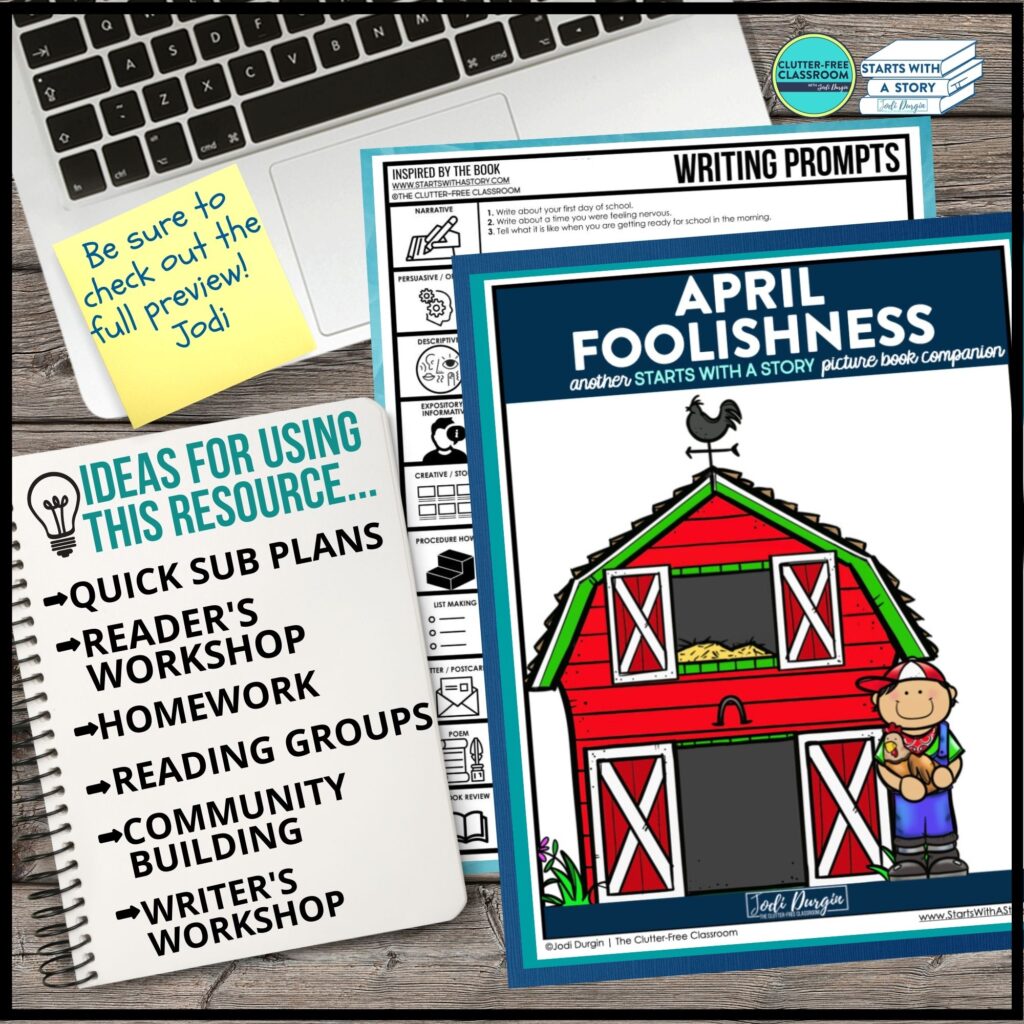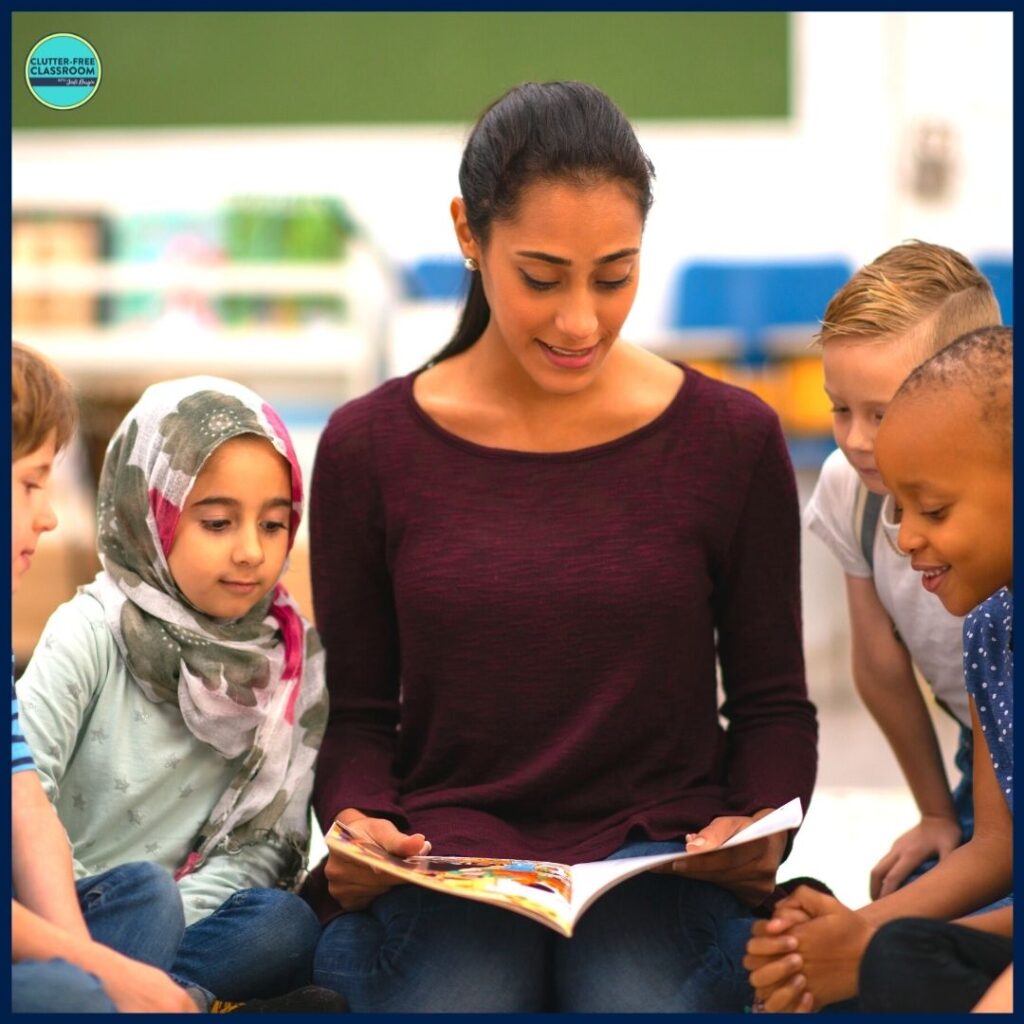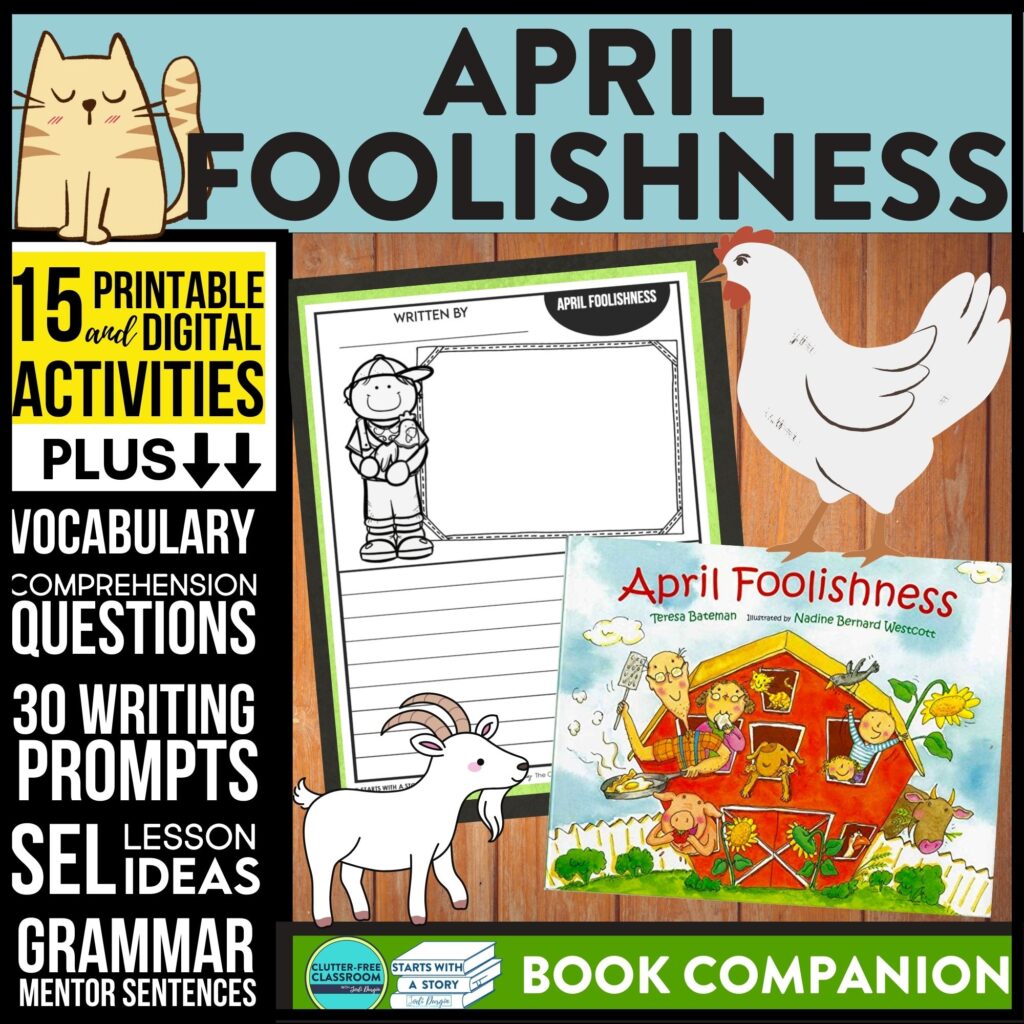Elementary teachers looking for lesson plans and activities for April Foolishness will find this post helpful. It includes resource recommendations, free teaching ideas, and information about the book. You’ll have everything you need to deliver engaging interactive read aloud lessons based on this story.
With themes of choices, this April Foolishness picture book by Teresa Bateman is a favorite in 1st, 2nd and 3rd grade classrooms. It will be a big hit in your classroom too! Learn more about this book below!
Engage Your Students with April Foolishness Lesson Plans & Activities in 3 Easy Steps:
- Read a summary of April Foolishness. You can find it in the section below.
- Check out the teaching ideas for reading comprehension strategies, grammar topics and social emotional learning skills that can be taught using this children’s book.
- Download the book companion to make lesson planning simple with April Foolishness reading comprehension questions, writing prompts, teaching ideas & no-prep extension activities.
APRIL FOOLISHNESS SUMMARY
It’s morning on the farm and the children have come to stay with Grandma and Grandpa. As Grandma gets ready she is reminded the children picked a good day. Grandpa is downstairs making breakfast when the children burst in alerting him that the cows got loose. To their surprise Grandpa is not concerned and continues pouring his milk.
Next the children tell Grandpa that the chicken are racing about, but he continues frying his eggs. After that, the children tell Grandpa the pigs have broken the gate, but Grandpa is not concerned. When Grandma comes into the kitchen to ask what all the noise is about, Grandpa shares that the grandchildren are trying to trick him. Grandma explains that it is not April Fool’s Day and Grandpa goes running outside but finds out Grandma was tricking him after all.
APRIL FOOLISHNESS LESSON PLAN IDEAS
Each of our 400+ Starts With a Story book companions come with a teacher’s guide to make lesson planning quick and easy, printable worksheets and digital resources that cover ALL of the standards-based reading comprehension skills.
When it comes to writing lesson plans and finding activities for April Foolishness, we’ve already done all of the heavy lifting for you.
We found this book was especially good at teaching the topics listed below.
READING COMPREHENSION QUESTIONS
The text-based April Foolishness reading comprehension questions focus on:
- analyzing setting
- author’s purpose
- making connections
- making predictions
- rhyme | rhythm | repetition
LITERATURE-BASED SOCIAL EMOTIONAL LEARNING LESSONS
We found this story to be a great SEL picture book to promote:
- choices
GRAMMAR, VOCABULARY & WORD STUDY
- plural nouns
- pronouns
- nouns
- contractions
APRIL FOOLISHNESS ACTIVITIES
You’ll receive all of the following resources aligned to the story:
- comprehension questions
- 30 writing prompts with themed paper
- vocabulary activities
- word study print & go activities
- ideas for grammar lessons with focus sentence printables
- social emotional learning discussion topics
- graphic organizers to target specific comprehension skills and strategies


YOU HAVE 2 OPTIONS! WHERE WOULD YOU LIKE TO PURCHASE THIS BOOK COMPANION?

BOOK INFO FOR ELEMENTARY TEACHERS
What are the reading levels for April Foolishness?
- Lexile® Measure: 540L
- Guided Reading Level: N
- DRA Level: 28
- Accelerated Reader Level (ARC): 2.9-3
Who is the author? Who is the illustrator?
The book was written by Teresa Bateman. It was illustrated by Nadine Bernard Wescott.
What genre is April Foolishness?
It is a fiction book. You may want to check out our genre activities or read our blog post, How to Teach Genre to Elementary Students.
How many pages are in the book?
The story is 32 pages long.









